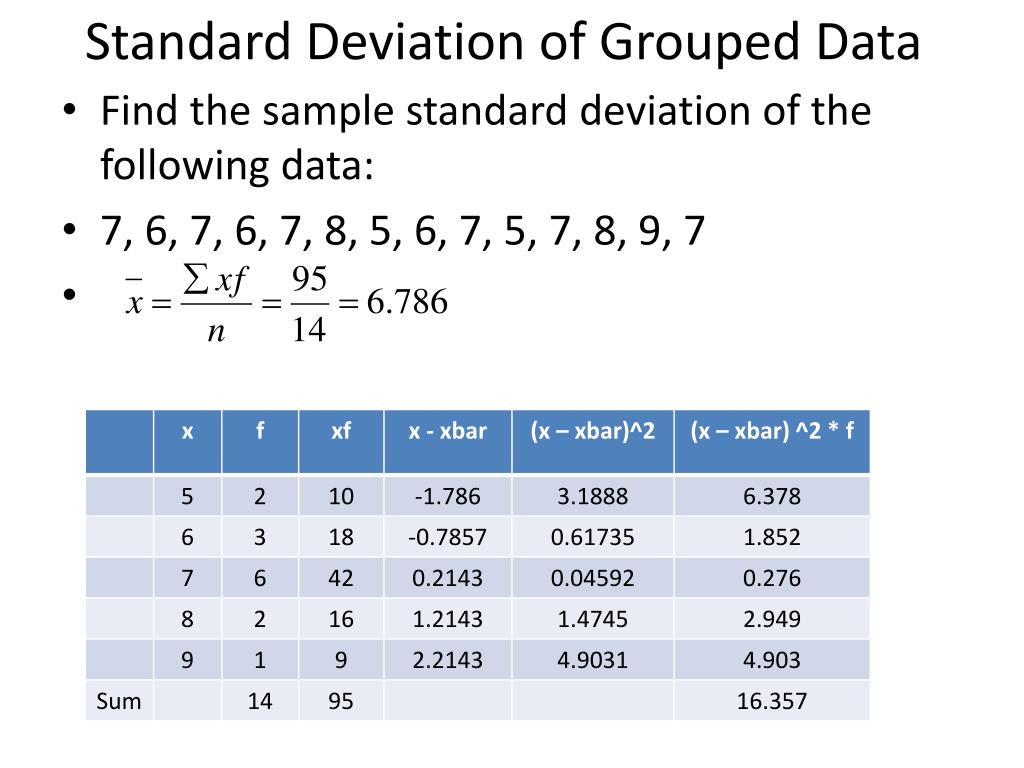

We’ve discussed significant figures elsewhere. Then I'd round it to 22.9 (NOT 22.91) because my least precise data point (the 24.5) had only one decimal place in it. the same number of decimal places) as the LEAST precise data point.

As a general rule, your final answer should have the same precision (i.e. In some scientific fields, there are very specific rules for determining the number of significant figures to leave in an answer, and they can get quite complicated. RoundingĪs for the final question about rounding: That depends on the accuracy and precision of the original data. So our standard deviation is \(\sqrt = 10.9\). We'll try to help with a "mid-course correction" if you're not getting the ideas 100%. Explain as much as you feel comfortable with, and a little more. Dive in, try it, and report back what you think you understand. The standard deviation is the square root of the variance. There are other formulas you may see, but this is the easiest. Here is our table with two new columns, the square of the midpoint, x, and the product with the number, \(Nx^2\): Income (*$1000) Midpoint(x) Number N*x x^2 N*x^2 In fact: you can subtract the squared from the to give the variance of the income distribution. This is not the same as the squared - that quantity is just the number you calculated at first, multiplied by itself.

The table (a frequency distribution) shows that, for instance, 50 people in the survey had incomes from $20,000 through $29,999.99 (assuming that 29.99 doesn’t mean, literally, $29,990, but really means “anything less than $30,000” some authors would write “20 –. Tony is asking for basic instruction in calculating the mean, variance, and standard deviation of a frequency distribution. Choose a suitable graph and display the frequency distribution. Find the mean and standard deviation of the income of people purchasing superannuation plans.ģ. The above table is data from a survey of recent purchasers of superannuation plans.ġ. Income (*$1000) Midpoint(x) Number of Purchasers Can you please give me answers to the following questions? I am doing some preparatory work before the course starts. I am preparing to take a statistics course after many years of being able to avoid doing stats. Here is a question from 1999: Statistics of Grouped Data

Next time I’ll look at another grouping issue that was raised in a recent question. Here we’ll complete that topic with a look at the less troublesome cases of Mean and Standard Deviation, including some issues that arise in the grouping process itself.
#Range variance and standard deviation for grouped data how to#
Two of our most-viewed posts deal with Mode and Median of Grouped Data: how to calculate these statistics for data that is supplied in the form of frequencies for classes of data (bins), rather than the individual data values.


 0 kommentar(er)
0 kommentar(er)
